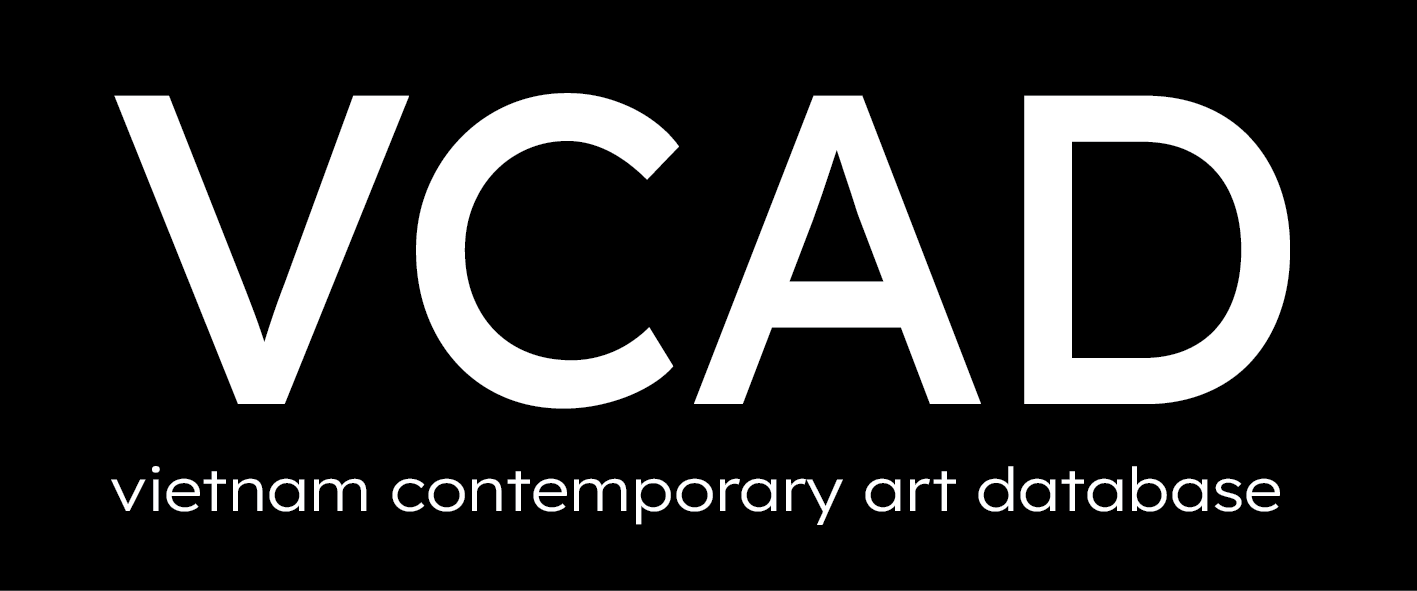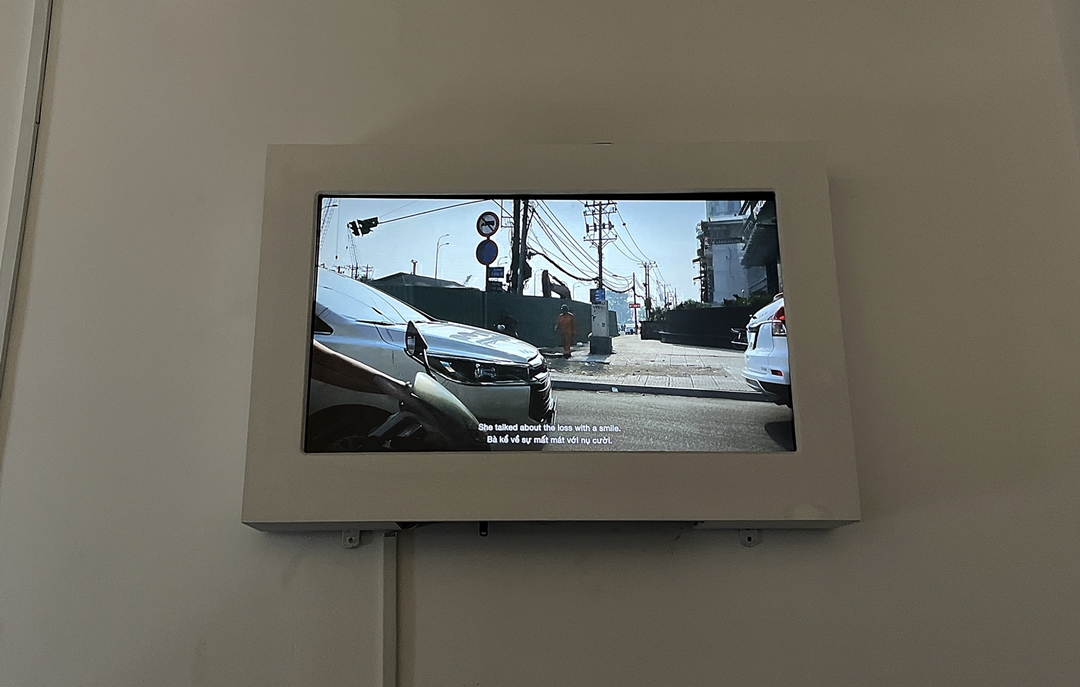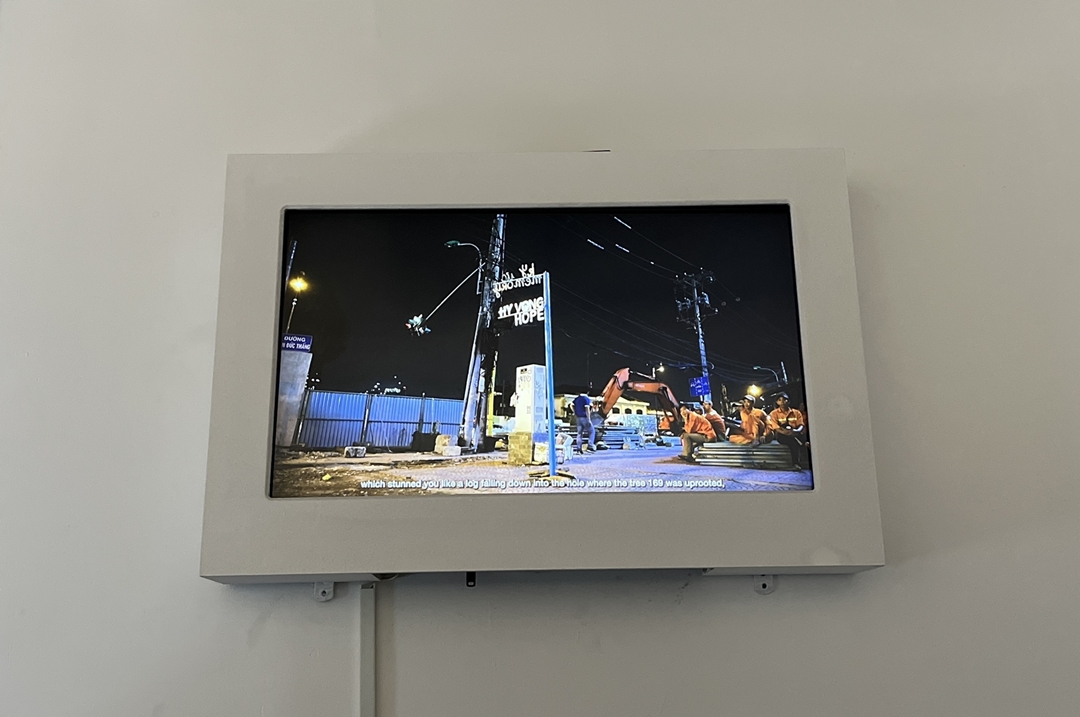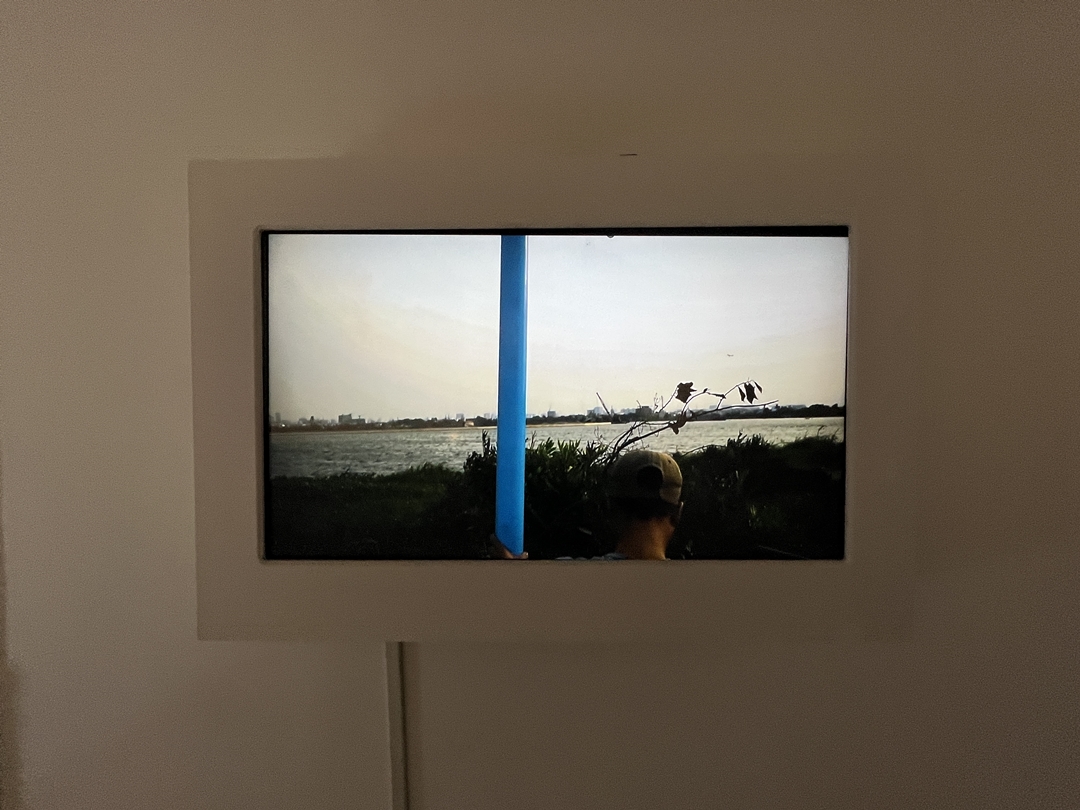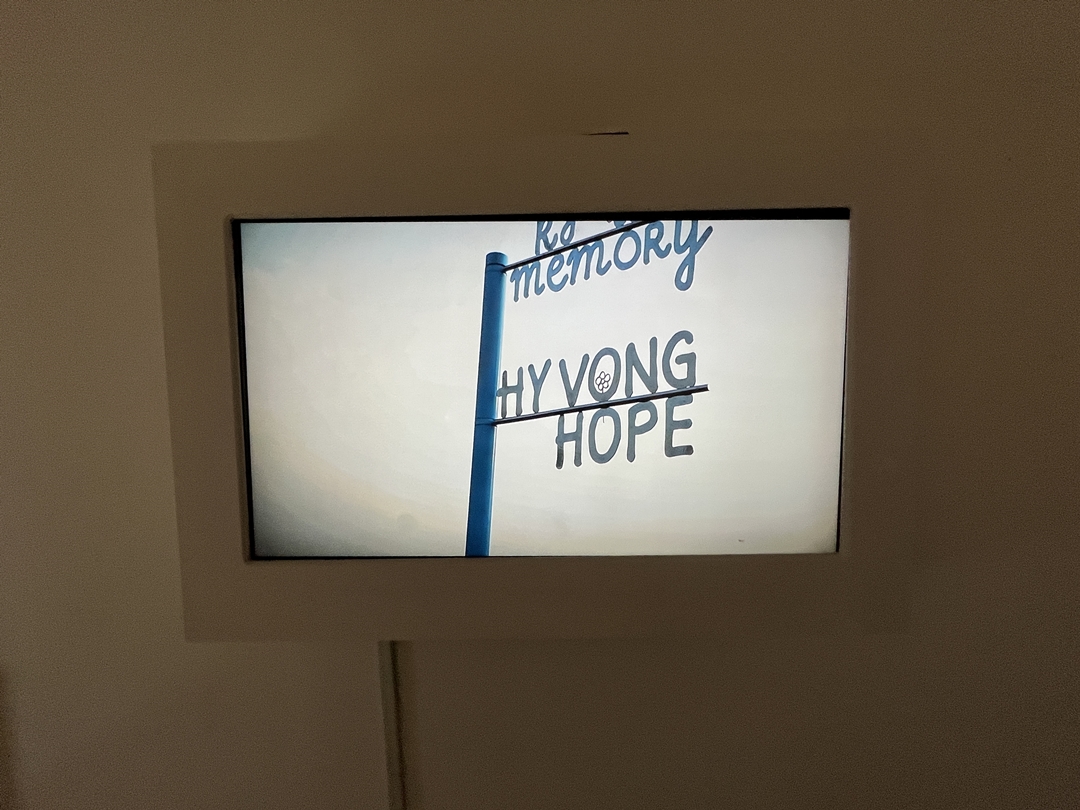Installation of public sculpture and video.
Medium of public sculpture: stainless steel, steel, dimension 167,6 x 270 cm.
Video's duration: 00:40:49.
Chief videographer: Trịnh Vĩnh Phúc, Ly Hoàng Ly.
Composer and pianist: Cao Thanh Lan.
Recording engineer: Gregor Siedl.
Second videographers: Phạm Duy Quang, Võ Thanh Phong, Nguyễn Hữu Vĩnh Huy.
Production Assistant: Cao Thị Như Nguyện.
Description
Hope - memory tree is the first work created to dedicate to the trees, the grass, the people and life out there. Inspired by the street nameplates and makeshift signs handwritten from those who make a living on the street, on the day the last tree, number 169, was cut down, Ly installed Hope - memory tree on the tree's former location. The public installation art had a chance to live fully to its spirit, which belonged to the public space, and was able to communicate to everyone through a straightforward and common language. The first audience of the work was an elder street vendor. She has been selling beverages under tree 169, together with those trees, she's been a witness to the upheavals of history. She arrived early in the morning, as soon as the work was installed. Those trees have fallen but people's lives had no choice but to carry on. Knowing the artist too well due to her spending days performing at the street, the lady leisurely used a foamboard to play with the letters spinning in the air. At that time, apart from the physical site, Ly also used social media as an exhibition space that archived most of the audience's interactions with the artwork. The work stood in peace for 10 days before being pushed down, same fate with the trees, however, its life seemed to transcend those short-lived days due to the values it brought might go beyond the dichotomy of artistic standard of beauty and ugliness. When the Western art world moved on from modernism, which dictated an artwork's autonomy regardless of space, artistic practices started to weave into the maze of the streets. Art in public places, art as public spaces, or art in the public interest were all evolving paradigms of the history of contemporary public art in the West. In the context of places like Vietnam, in order to read a public installation art such as Hope - memory tree, it's necessary to go back to a basic question: To whom does public space belong? To what extent, can a guerrilla installation artwork integrate to every day's life, become a signboard, and live the life it's supposed to? To what extent, does the artwork become an intervention; to which problem does it intervene and with whom does it become a dialogue - confrontation? Regardless of being in the East or the West, public art has largely been popularised through socio-political movements. Hence, is it possible to completely eliminate the political aspects of the work? There are various ways to read a public art work, it can be read from the revolution of art history, or through urban planning and the design of common spaces, or through the lenses of civic rights and its limitations, or even just from the eyes of those who accidentally encounter the work and play with it wholeheartedly.
Description is excerpted from "Poems of the sky" Exhibition Booklet, 2023, p.7-9.
